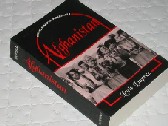
Learning: The Journey of a Lifetime
Journals as an Aid to Learning
Afghanistan
afghan5 |
An Example of a "Learning Process" Journal (using the 2 colored box format) |
September
20 ,
2003 |
|
Book: Afghanistan by Louis Dupree Source: Oxford Pakistan Paperbacks. Oxford University Press, 1973. |
6:20 am (Saturday). Earlier in the week I reread chapter 8 on Religious Non-Literacy and then read chapter 9 Folklore and Folk Music. I view the chapter on religion to be very important since I am not that familiar with Islam. I will try an Inspiration chart for chapter 8. |
Here are a few passages that I feel are noteworthy:
|
While making notes on the "Five Pillars of Islam", I come across the phrase the "Muslim religious calendar". There is an appendix (D) that gives further information. I have always had an interest in time and how we measure it, but have never really studied the different systems. |
Afghanistan uses three different calendars, and calendars printed in Afghanistan have all three systems printed on the same page. The Gregorian calendar is the one used world-wide, but it originally came from Pope Gregory in 1582 to replace the unwieldy Julian calendar. Catholic countries adopted it and others slowly followed suit (e.g. England - 1752, Japan - 1873, China - 1911, USSR - 1923). The Shamsi (secular) calendar is a solar calendar which has the same 12 months but the first day of the month occurs on about the 21st to 23rd day of the Gregorian month. The Qamari is a lunar calendar, which means that the months occur 11 days earlier each year. Ramazan (Ramadan) is the month of fasting. The Muslim world uses variants of Arabic names for the Qamari months. Both Shamsi and Qamari calendars date from the Hijra (Mohammed's pilgrimage to Mecca). The year 1 corresponds to 622 A.D. |
Now to find a bit more about the difference between the Julian and the Gregorian calendars. But first to complete the notes for this chapter. |
|
I have thoroughly enjoyed making these notes this morning. 8:10 am |
Reminder: each "Learning" session has a new web page.
Next Page |
||
E-mail: dale.burnett@uleth.ca |